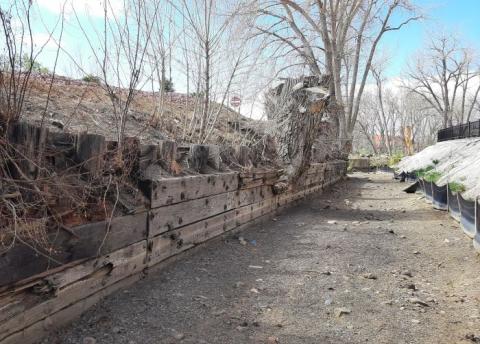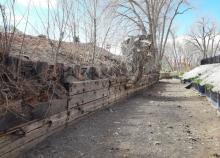The Baca-Picketwire Ditch (5LA.2161.5)

The Baca-Picketwire Ditch (5LA.2161.5)
The Baca Ditch was first excavated in late 1861 and was in use by Spring 1862. The ditch was likely the first actual diversion on the Purgatoire River and was one of the first successful irrigation efforts in the state. The Baca was instrumental in the early agricultural development of the larger Trinidad/El Moro region. The ditch was named after and built by Felipe Baca , a prominent early citizen of Trinidad and the namesake of Baca County, Colorado. The Baca Ditch Company, which owned and operated the Baca Ditch, later consolidated the Northside, Chicosa, and Lujan ditches and became known as the Picketwire Ditch Company, at which point the Baca became known as the Baca-Picketwire or simply Picketwire Ditch. Despite the complicated historical naming conventions (and even more complicated water rights!) the ditch was and still is the agricultural backbone of the area and a central feature of downtown Trinidad, Colorado.
Site 5LA.2161.5 is a segment of the Baca-Picketwire Ditch recorded by the Natural Resources Conservation Service (NRCS) in 2024. The site consists of approximately 200 meters of earthen ditch measuring approximately 20 feet across and 8 feet deep on average. Portions of the ditch are unlined, while sections of the ditch have been reinforced with repurposed railroad ties and hardware. Repurposed railroad rails also reinforce the southern edge of the southern bank (between the ditch and the river). The headgate inlet to the segment, a set of headgates at the midpoint of the segment, and the outlet from the segment have all been replaced with modern concrete structures - the inlet and outlet within the last few years. Due to erosion issues in the immediate area, NRCS and the Purgatoire Water Conservation District partnered to line Segment 5 of the Baca-Picketwire Ditch with concrete.
Authors: NRCS Colorado
Keywords: Irrigation, Trinidad, Baca, Picketwire
